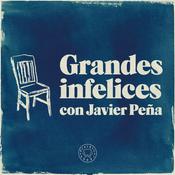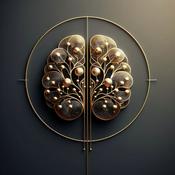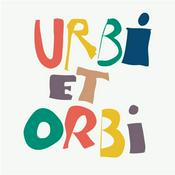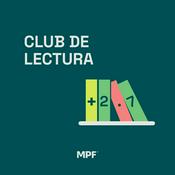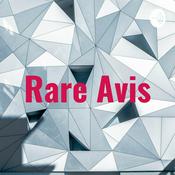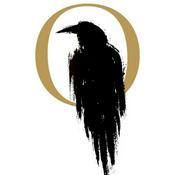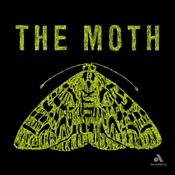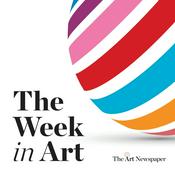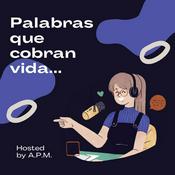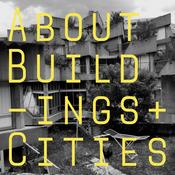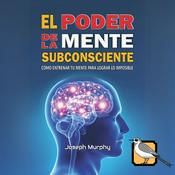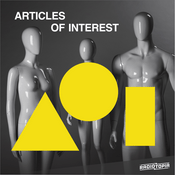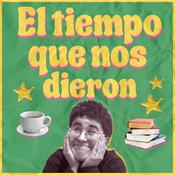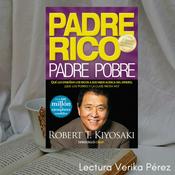170 episodios

How to Live an Artful Life: December
30/11/2025 | 8 min
Dear listeners, As we enter a new month of December, I wanted to share a teaser of the audiobook of my new book, How to Live an Artful Life. https://www.waterstones.com/book/how-to-live-an-artful-life/katy-hessel/9781529155204 Here is an extract from the month of December, featuring its introduction and the first five days. Each month is based around a theme. For example, January is about seeking out ideas, February is about love, and September focuses on time. December's is joy and features thoughts, reflections, creative exercises and daily routines from the likes of Laurie Anderson, Louise Bourgeois, Yoko Ono, Judy Chicago, Faith Ringgold, and more. A time of celebration, light and beauty; a time to spend with family and take part in festivities; to relish in the delights that the gift of art can give, and to take stock in everything you’ve discovered, learnt, tried and tasted this year. As we embark on this month, before we start again in January, think of December – like art – as a gift that has been given to you, full of work yet to be written, painted, sculpted and more; people whom you have yet to meet, talk to or fall in love with.

Bonus: Katy Hessel & Es Devlin
28/11/2025 | 58 min
I am so excited to bring you this conversation with the extraordinary Es Devlin, who joined me at Liberty last week to celebrate the release of How to Live an Artful Life. Es Devlin is an artist and stage designer renowned all over the world for her large-scale performative sculptures and environments – from theatre and opera design for the National Gallery and Royal Opera House, to kinetic stage sculptures for musicians like Beyoncé, U2 and Lady Gaga. She has also created luminous installations at the V&A, Serpentine Galleries, Somerset House, and more. Whether designing for Beyoncé, the opera, or creating public artworks, Es Devlin’s works dissolve the boundaries between art, architecture and performance, and encourage us to rethink our position in the world. Expertly led by the wonderful Hannah Macinnes, we touched on all things to do with living an artful life – Es’s morning routine; how we can get better at focusing our attention on one thing; artmaking as an expression of love; the artist hustle – and so much more. I can’t wait for you to hear it. Pick up your copy of How to Live an Artful Life: https://www.waterstones.com/book/how-to-live-an-artful-life/katy-hessel/9781529155204 An Atlas of Es Devlin https://www.waterstones.com/book/an-atlas-of-es-devlin/es-devlin/andrea-lipps/9780500023181

Magda Keaney on Julia Margaret Cameron
12/11/2025 | 40 min
I am so excited to say that my guest on the GWA Podcast is the esteemed curator, author, and expert in photography, Madga Keany. Currently the Head Curator of International Art at the National Gallery of Art, Canberra, Magda was most recently Curator at the National Portrait Gallery, Canberra, and before that, Senior Curator, Photographs at the National Portrait Gallery London, where she lead the realisation of a major re-presentation of the Photographs Collection as part of the museum’s rehaul. Keany has curated shows and published texts on Australian art, design and social history, photography that ranges from the Victorian period to fashion, conflict and portraiture, solo presentations of portraits by Irving Penn, among many others. She has written for the groundbreaking Know My Name project, that put women artists in Australia on a global stage as well as for Cindy Sherman, A World History of Women Photographers, and more. …but it was her exhibition last year that really grabbed my attention: Francesca Woodman and Julia Margaret Cameron: Portraits to Dream in', that brought together the two photographers working 100 years apart, from very different worlds, circumstances and contexts, but which showed how these pioneering women shaped the medium, with their dreamlike pictures imbued with beauty, symbolism, classicism, transformation and more… So today, I couldn’t be more excited to delve into the life of the 19th century photographer, Julia Margaret Cameron, who, aged 49 in 1863, picked up a camera and, largely self-taught, crafted her distinct bohemian style pictures with that hazy sepia glow, that proved to not only be influential in Victorian Britain, but have a huge impact on photography at large. As Cameron once said: “My aspirations are to ennoble Photography and to secure for it the character and uses of High Art by combining the real & Ideal & sacrificing nothing of Truth by all possible devotion to poetry and beauty.” And I can’t wait to find out more. People mentioned: Julia Margaret Cameron (1815–1879) Francesca Woodman (1958–1981) John Herschel (1792–1871) Artworks: Julia Margaret Cameron, Annie, 1864; https://collections.vam.ac.uk/item/O81145/annie-photograph-cameron-julia-margaret/ Julia Margaret Cameron, Pomona, 1872; https://collections.vam.ac.uk/item/O1433678/pomona-photograph-cameron-julia-margaret/ Julia Margaret Cameron, Thomas Carlyle, 1867; https://www.metmuseum.org/art/collection/search/269434 Julia Margaret Cameron, The Astronomer, 1867; https://collections.vam.ac.uk/item/O1433637/the-astronomer-photograph-cameron-julia-margaret/ Julia Margaret Cameron, Ellen Terry, at the age of sixteen, 1864 https://www.metmuseum.org/art/collection/search/269433 -- THIS EPISODE IS GENEROUSLY SUPPORTED BY THE LEVETT COLLECTION: https://www.famm.com/en/ https://www.instagram.com/famm_mougins // https://www.merrellpublishers.com/9781858947037 Follow us: Katy Hessel: @thegreatwomenartists / @katy.hessel Sound editing by Nada Smiljanic Music by Ben Wetherfield

Megan Fontanella on Gabriele Münter
05/11/2025 | 42 min
I am so excited to say that my guest on the GWA Podcast today is the esteemed curator, Megan Fontanella. A specialist in Modern Art and Provenance at the Guggenheim New York, Fontanella’s research interests focus on late 19th and early 20th European art and the avant-garde in the USA. She has organised a plethora of exhibitions for the Guggenheim across the globe, from Visionaries: Creating a Modern Guggenheim (2017); Kandinsky (2020–21); Kandinsky: Around the Circle (2021–22; 2023–24); Young Picasso in Paris (2023), as well as travelling collection exhibitions in Australia, Canada, and Europe. But the reason why we are speaking to Fontanella today is because she is very excitingly curating a monumental exhibition by the German Expressionist, Gabriele Münter. Titled Contours of a World, the show – opening 7 November through to April 2026 – will feature 60 of the artist’s luminous, bold, sometimes rapidly-made paintings – from her portraits of friends to landscapes of the German alpine town of Murnau – that chart the changing face of modernism in art. Focusing on 1908 to 1920, it will deep-dive into her involvement with “The Blue Rider” – a group of visionary artists and writers who explored how colour and form could evoke emotion and spiritualist ideas – to the works she made during the First World War. Gabriele Münter: Contours of a World is on view at Guggenheim New York, 7 Nov – 26 Apr 2026: https://www.guggenheim.org/exhibition/gabriele-munter Artists mentioned: Gabriele Münter (1877–1962) Wassily Kandinsky (1866–1944) Marianne von Werefkin (1860–1938) Der Blaue Reiter (“The Blue Rider”) group Artworks mentioned: Gabriele Münter - Still Life on the Tram After Shopping (1909–1912) Gabriele Münter - Portrait of Marianne Werefkin (1909) Gabriele Münter - Boating (1910) Gabriele Münter - Meditation (1917) Gabriele Münter - Future (Woman in Stockholm) (1917) Gabriele Münter - Portrait of Anna Roslund (1917) Gabriele Münter - Lady in an Armchair, Writing (1929) Gabriele Munter - Breakfast of the Birds (1934) -- THIS EPISODE IS GENEROUSLY SUPPORTED BY THE LEVETT COLLECTION: https://www.famm.com/en/ https://www.instagram.com/famm_mougins // https://www.merrellpublishers.com/9781858947037 Follow us: Katy Hessel: @thegreatwomenartists / @katy.hessel Sound editing by Nada Smiljanic Music by Ben Wetherfield

Ekow Eshun on Toni Morrison, Octavia E. Butler, Hilary Mantel, Wangechi Mutu, and more
29/10/2025 | 1 h 2 min
I'm so excited to say that today’s guest on the Great Women Artist Podcast is the esteemed curator, writer, broadcaster and cultural trailblazer, Ekow Eshun. Born in North-west London in 1968, Eshun has been at the forefront of creative culture for decades. Writing across subjects and presenting documentaries, Eshun has curated groundbreaking exhibitions. From the 2022 In the Black Fantastic, at the Hayward in London – to The Time Is Always Now, a study of the Black figure and its representation in contemporary art, that began at London’s National Portrait Gallery, and has since travelled across the US. The author of multiple books: in 2006, he published his memoir: “Black Gold of the Sun: Searching for Home in England and Africa” an exploration of identity and race, that sees Eshun travelling through Ghana in search of his roots. And in 2024, The Strangers, a stunning work of creative nonfiction that tells the story of five pioneering Black men set against a vivid backdrop of art, culture, and resistance. So for this special episode we are going to deep dive into the women writers and artists who have influenced his life and career, including Morrison, the pioneering science fiction writer, Octavia E. Butler, Kenyan-American artist Wangechi Mutu, the Rotterdam based artist Ellen Gallagher, and photographer Liz Johnson Artur. Because, as Eshun himself says, “The great thing about working with artists is they don’t walk a straight line or think along linear paths; they think in patterns, allowing us to approach long-established conversations from a novel perspective.” Octavia E. Butler (1947–2006) Hilary Mantel (1952–2022) Wangechi Mutu (b.1972) Ellen Gallagher (b.1965) Liz Johnson Artur (1964) Toni Morrison (1931–2019) Exhibitions mentioned: In the Black Fantastic, 2022, Hayward Gallery, London: https://www.southbankcentre.co.uk/venues/hayward-gallery/past-exhibitions/in-the-black-fantastic/ The Time Is Always Now, 2024-present, touring: https://www.npg.org.uk/whatson/exhibitions/2024/the-time-is-always-now The Clearing, space Un gallery, Tokyo, November 2025; https://www.artweektokyo.com/en/institution-gallery/space-un/ Books mentioned: Octavia Butler - Parable of the Sower (1993) https://www.waterstones.com/book/parable-of-the-sower/octavia-e-butler/9781472263667 Octavia Butler - XenoGenesis trilogy; Dawn (1987), Adulthood Rites (1988), and Imago (1989) https://www.octaviabutler.com/xenogenesis-series Hilary Mantel - The Wolf Hall trilogy; Wolf Hall (2009), Bring Up the Bodies (2012), and The Mirror & the Light (2020) https://www.waterstones.com/book/wolf-hall/hilary-mantel/9780008381691 Ekow Eshun - Black Gold of the Sun: Searching for Home in England and Africa (2006): https://www.waterstones.com/book/9780141010960?sv1=affiliate&sv_campaign_id=117976&awc=3787_1761656125_d069bd054bf50de1a9bfc45991a52d17&utm_source=117976&utm_medium=affiliate&utm_campaign=Penguin+Books Ekow Eshun - The Strangers (2024): https://www.waterstones.com/book/the-strangers/ekow-eshun/9780241990698 Herman Melville - Moby Dick (1851) https://www.waterstones.com/book/moby-dick/herman-melville/andrew-delbanco/9780142437247 Toni Morrison - Beloved (1987) https://www.waterstones.com/book/beloved/toni-morrison/9780099760115 -- THIS EPISODE IS GENEROUSLY SUPPORTED BY THE LEVETT COLLECTION: https://www.famm.com/en/ https://www.instagram.com/famm_mougins // https://www.merrellpublishers.com/9781858947037 Follow us: Katy Hessel: @thegreatwomenartists / @katy.hessel Sound editing by Nada Smiljanic Music by Ben Wetherfield
Más podcasts de Arte
Podcasts a la moda de Arte
Acerca de The Great Women Artists
Escucha The Great Women Artists, Un Libro Una Hora y muchos más podcasts de todo el mundo con la aplicación de radio.net

Descarga la app gratuita: radio.net
- Añadir radios y podcasts a favoritos
- Transmisión por Wi-Fi y Bluetooth
- Carplay & Android Auto compatible
- Muchas otras funciones de la app
Descarga la app gratuita: radio.net
- Añadir radios y podcasts a favoritos
- Transmisión por Wi-Fi y Bluetooth
- Carplay & Android Auto compatible
- Muchas otras funciones de la app


The Great Women Artists
Descarga la app,
Escucha.

